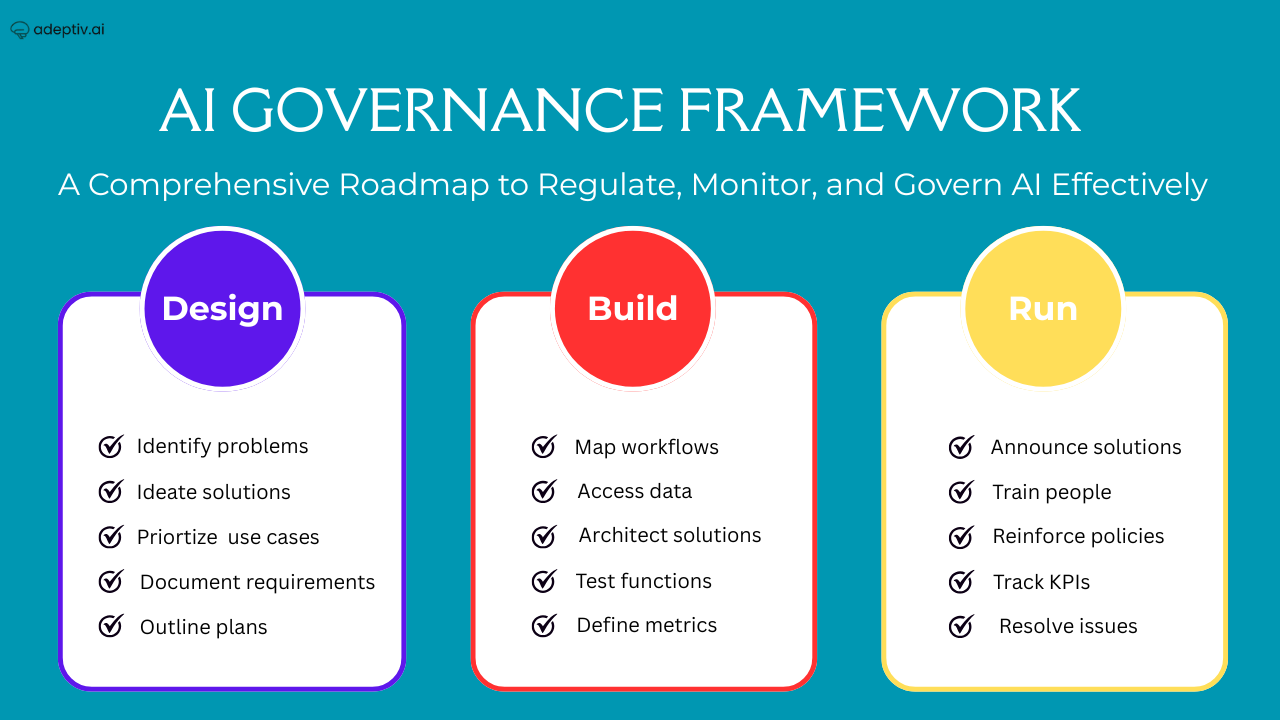At a Glance
- Explains how AI risk management software ensures compliance and strengthens AI governance frameworks.
- Covers key AI risk types—data, model, operational, and ethical/legal—and how to mitigate them.
- Provides real-world case insights on AI non-compliance and its financial, legal, and reputational costs.
- Outlines best practices for building Responsible AI through automation, transparency, and policy alignment.
The Rising Stakes of AI Risk and Compliance
AI is transforming industries — but it’s also transforming risk. As organizations deploy AI across finance, healthcare, and public services, compliance violations and governance failures are no longer theoretical.
According to IBM’s 2024 AI Risk and Compliance Report, 60% of global enterprises identify AI governance as their biggest compliance challenge. Yet only 22% have systems in place for continuous AI risk monitoring.
This gap exposes organizations to regulatory penalties, lawsuits, and reputational damage — all of which can be mitigated with the right AI risk management software.
AI governance and compliance are no longer “checklist” exercises. They’re essential business imperatives to safeguard trust, accountability, and brand resilience.
Understanding AI Risk Categories
Before we can manage risk, we must define it. AI introduces unique vulnerabilities beyond traditional IT or cybersecurity risks. These fall into four key categories:
Data Risks
- Privacy breaches — misuse or leakage of sensitive personal data.
- Security flaws — vulnerabilities in data pipelines that invite cyberattacks.
- Bias and imbalance — skewed training data producing discriminatory outputs.
Example: The COMPAS algorithm used in U.S. courts was found to be twice as likely to misclassify Black defendants as high-risk — a data bias issue that reshaped the debate on AI fairness.
Model Risks
- Drift — when real-world data diverges from the training data, degrading accuracy.
- Lack of explainability — opaque “black box” models that can’t justify decisions.
- Robustness gaps — vulnerability to adversarial manipulation.
Example: Apple Card faced public backlash after reports of gender bias in credit limit decisions, prompting an official investigation into algorithmic transparency.
Operational Risks
- Poor human-AI collaboration.
- Inadequate oversight or documentation.
- Integration failures across departments.
Example: In healthcare AI, incorrect data mapping between systems has led to misdiagnoses — not due to flawed models but broken governance chains.
Ethical and Legal Risks
- Discrimination and fairness issues.
- Accountability in AI-caused harm.
- Non-compliance with evolving AI laws like the EU AI Act, GDPR, and California’s AI Bill.
Each of these risks demands structured mitigation through policy, oversight, and technology — the foundation of a resilient AI Governance Framework.
Why Traditional Risk Management Falls Short
Manual risk assessment tools can’t keep pace with AI’s scale, speed, and self-learning dynamics. By the time a traditional audit catches a compliance gap, the model might have already generated thousands of untraceable outputs.
That’s where AI risk management software changes the game. It automates continuous oversight — detecting anomalies, flagging bias, and aligning every AI workflow with regulatory requirements in real time.
The Market Momentum
The global AI Model Risk Management Market is projected to grow from $5.7 billion in 2024 to $10.5 billion by 2029, at a CAGR of 12.9% (MarketsandMarkets, 2024).
This surge reflects the demand for:
- Automated risk identification and compliance mapping.
- Real-time monitoring of AI models.
- Integration with AI governance and ethics frameworks like ISO 42001 and NIST AI RMF.
Key Benefits of AI Risk Management Software
1. Real-Time Risk Monitoring
Advanced AI risk tools track data pipelines, models, and outputs to detect compliance breaches, bias, or drift instantly. This reduces the time between incident and remediation — crucial for highly regulated industries like finance and healthcare.
2. Automated Compliance Checks
By syncing with regulatory databases, these tools ensure constant alignment with frameworks such as the EU AI Act, GDPR, and California’s AI Regulations. They generate audit-ready reports, reducing manual documentation overhead.
3. Data-Driven Decision-Making
Machine learning models within governance platforms analyze training and performance data to identify fairness gaps or data imbalances, strengthening ethical AI practices and boosting accountability.
4. Third-Party Risk Management
Enterprises often rely on external data vendors or AI tools. Risk management software automates vendor assessments, ensuring third-party models meet the same compliance and ethical standards as internal systems.
5. Cross-Functional Collaboration
AI governance requires joint ownership between compliance, engineering, and leadership teams. Centralized dashboards enable unified visibility and coordinated responses across the enterprise.
Building a Resilient AI Governance Framework
An effective AI Governance Framework integrates technology, policy, and ethics into every stage of the AI lifecycle:
- AI Inventory & Risk Classification — Catalog every model, rate its risk, and track lifecycle maturity.
- Ethical Principles & Policy Layer — Define Responsible AI values like fairness, transparency, and accountability.
- Technical Controls & Safeguards — Embed explainability, bias audits, and human oversight gates.
- Continuous Monitoring & Audit Trails — Automate documentation for traceability and defense during audits.
- Governance Committees & Accountability Structures — Establish cross-functional boards to oversee compliance.
- External Audits & Standard Mapping — Align controls with ISO 42001, NIST AI RMF, and sector regulations.
- Incident Response & Remediation Plans — Develop rollback protocols and legal review workflows for AI errors.
When these elements are integrated, AI becomes not just compliant — but accountable, explainable, and trustworthy.
Real-World Case Insight: AI Non-Compliance in Action
In 2023, Clearview AI was fined €20 million by Italy’s data regulator for scraping biometric data without consent. In the same year, HireVue faced scrutiny for using facial analysis in recruitment, prompting a review by privacy watchdogs.
Both incidents underline one truth: AI compliance isn’t optional; it’s existential. Enterprises must design governance and risk frameworks before scaling innovation.
The Role of AI Governance Platforms
While risk management software focuses on monitoring, AI governance platforms provide the foundation for Responsible AI by unifying:
- Policy Enforcement — Codifying ethical principles into workflows.
- Transparency Tools — Model cards, documentation, and explainability layers.
- Continuous Monitoring — Real-time adaptation to new laws and model behaviors.
- Collaboration Hubs — Integrating legal, technical, and ethical oversight.
Conclusion
AI governance and risk management are the new foundations of enterprise trust. As regulations tighten and public scrutiny grows, organizations that adopt robust AI Governance Frameworks and automated compliance systems will lead the next era of Responsible AI.
FAQs
1. What is AI risk management software?
AI risk management software identifies, monitors, and mitigates risks across data, models, and operations to ensure Responsible AI and regulatory compliance.
2. How does AI governance differ from AI compliance?
AI governance defines principles, roles, and oversight structures, while AI compliance ensures adherence to laws like the EU AI Act and ISO 42001.
3. Why is Responsible AI essential for enterprises?
Responsible AI ensures fairness, transparency, accountability, and safety — reducing reputational and legal risks while improving user trust.
4. What standards guide AI governance frameworks?
Key standards include ISO 42001, NIST AI RMF, and the EU AI Act, each offering structured controls for AI development and deployment.
5. How does Adeptiv AI enhance governance and compliance?
Adeptiv AI automates risk tracking, policy enforcement, and evidence mapping — helping enterprises stay audit-ready and compliant across jurisdictions.



